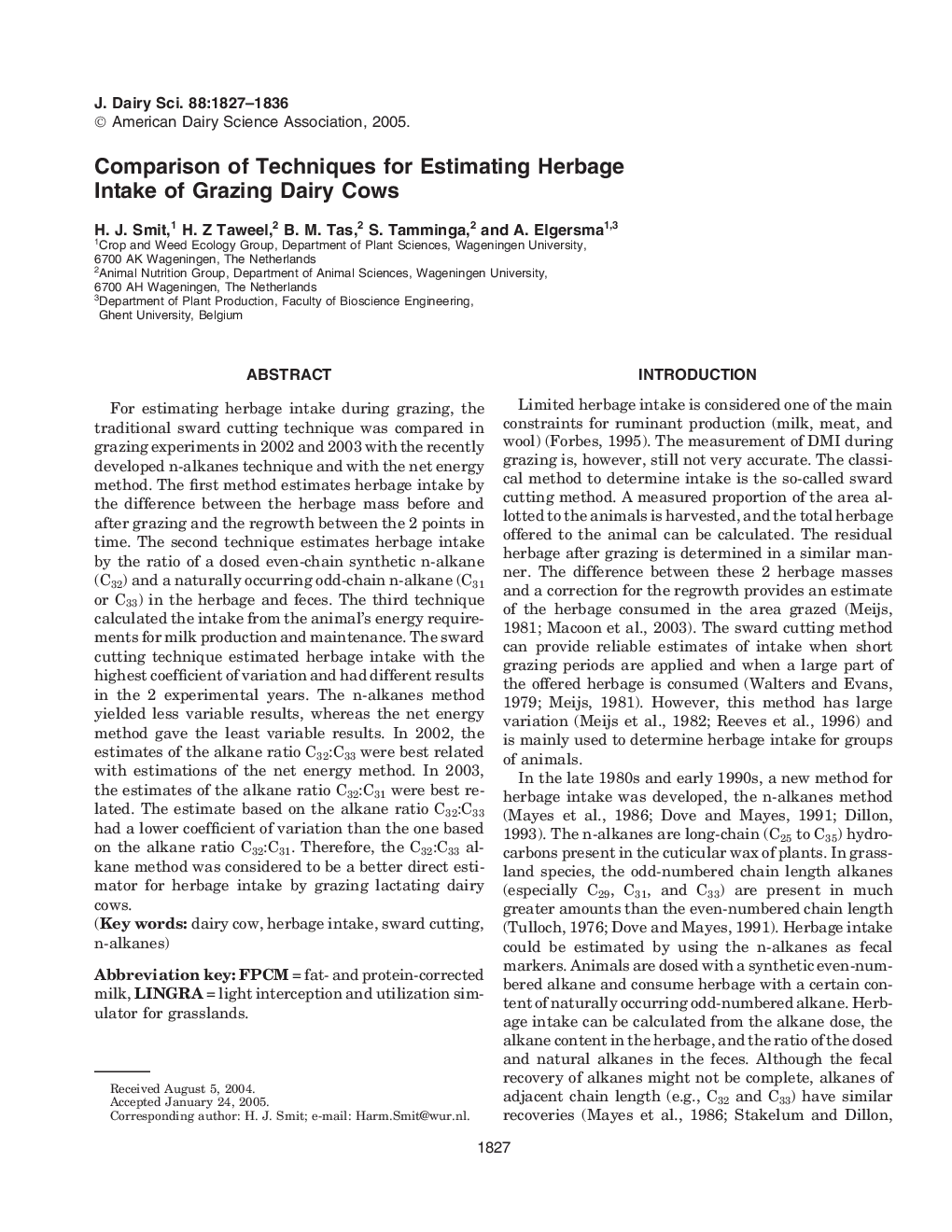| Article ID | Journal | Published Year | Pages | File Type |
|---|---|---|---|---|
| 8981323 | Journal of Dairy Science | 2005 | 10 Pages |
Abstract
For estimating herbage intake during grazing, the traditional sward cutting technique was compared in grazing experiments in 2002 and 2003 with the recently developed n-alkanes technique and with the net energy method. The first method estimates herbage intake by the difference between the herbage mass before and after grazing and the regrowth between the 2 points in time. The second technique estimates herbage intake by the ratio of a dosed even-chain synthetic n-alkane (C32) and a naturally occurring odd-chain n-alkane (C31 or C33) in the herbage and feces. The third technique calculated the intake from the animal's energy requirements for milk production and maintenance. The sward cutting technique estimated herbage intake with the highest coefficient of variation and had different results in the 2 experimental years. The n-alkanes method yielded less variable results, whereas the net energy method gave the least variable results. In 2002, the estimates of the alkane ratio C32:C33 were best related with estimations of the net energy method. In 2003, the estimates of the alkane ratio C32:C31 were best related. The estimate based on the alkane ratio C32:C33 had a lower coefficient of variation than the one based on the alkane ratio C32:C31. Therefore, the C32:C33 alkane method was considered to be a better direct estimator for herbage intake by grazing lactating dairy cows.
Related Topics
Life Sciences
Agricultural and Biological Sciences
Animal Science and Zoology
Authors
H.J. Smit, H.Z Taweel, B.M. Tas, S. Tamminga, A. Elgersma,
